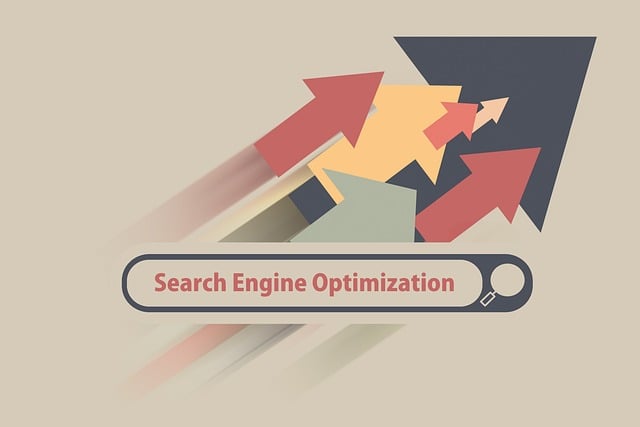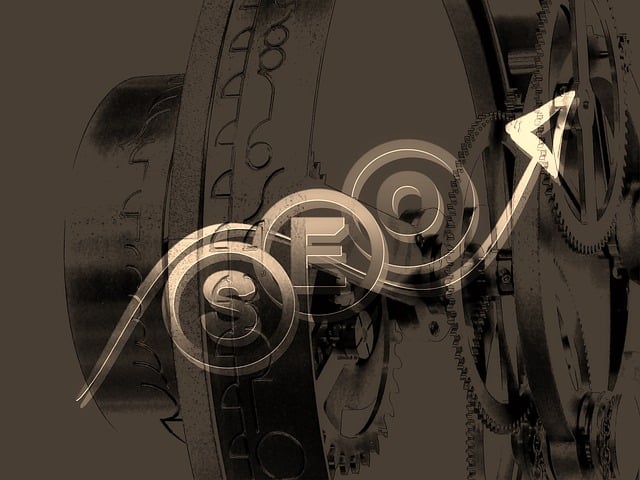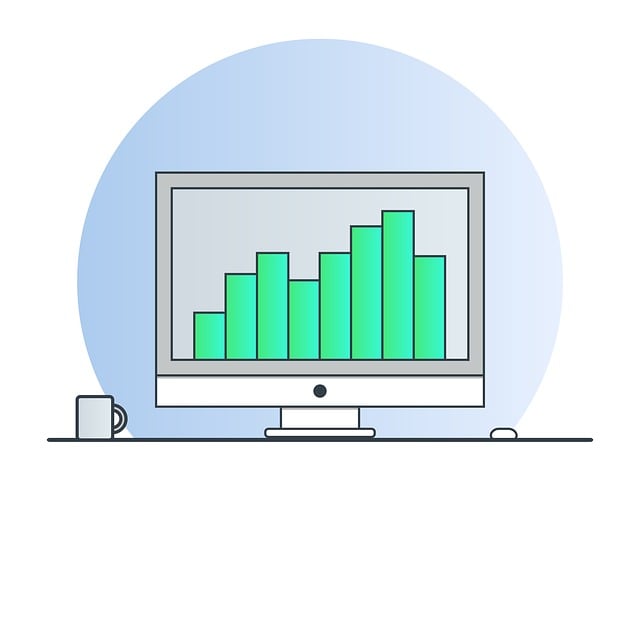On-Page SEO is crucial for web developers and content creators to boost website rankings and performance. By focusing on individual page optimizations like relevant keywords, quality content, meta tags, image optimization, browser caching, and server-side rendering, websites can significantly improve loading times. Search engines, especially Google, prioritize fast-loading sites as key ranking factors, rewarding users with better visibility and higher rankings. Mobile optimization, effective caching, clean HTML, minified code, and continuous monitoring using tools like Google PageSpeed Insights are essential components of a robust On-Page SEO strategy to enhance user experience and search engine visibility.
In the digital landscape, page speed optimization is a vital component of successful On-Page SEO strategies. This comprehensive guide explores how improving web page load times directly impacts search engine rankings, user experience, and overall website performance. We delve into key factors affecting page speed, providing actionable techniques to optimize HTML, CSS, JavaScript, and more. From mobile optimization and image compression to caching and efficient coding practices, discover essential strategies to enhance your site’s speed and boost its SEO potential.
Understanding On-Page SEO and Its Impact on Page Speed

On-Page SEO is a crucial aspect of search engine optimization that focuses on optimizing individual web pages to rank higher in search results. It involves various strategies and elements directly within a webpage, including relevant keywords, quality content, meta tags, and structure. When it comes to page speed, On-Page SEO plays a significant role. Search engines, particularly Google, have made it clear that page speed is a critical ranking factor, which means a well-optimized on-page strategy can directly impact a website’s loading time.
By implementing best practices in On-Page SEO, web developers and content creators can ensure their pages load quickly and efficiently. This includes optimizing images, reducing HTTP requests, leveraging browser caching, and utilizing server-side rendering techniques. Such optimizations not only enhance user experience by minimizing wait times but also send positive signals to search engines, potentially leading to improved rankings and increased visibility in search results.
Key Factors for Optimizing Web Pages for Faster Loading Times

When optimizing web pages for faster loading times, several key factors within your control come into play. One of the most significant aspects is minimizing page size by compressing images and leveraging browser caching. This reduces the amount of data that needs to be downloaded each time a user visits, leading to quicker load times. Additionally, enabling lazy loading ensures that content appears only when it’s in the viewport, deferring the download of lower-priority resources until needed.
Another crucial element for On-Page SEO is improving site structure and code efficiency. A well-organized site hierarchy with a clear navigation menu helps search engines understand your page’s context, enhancing crawlability. Similarly, optimizing HTML, CSS, and JavaScript code by removing unnecessary characters and minifying them improves rendering speed. Fast loading pages not only enhance user experience but also signal to search engines that your site is optimized, potentially boosting your SEO rankings.
How Search Engines Evaluate Page Speed for SEO Rankings

Search engines, particularly Google, have made page speed an essential factor in their ranking algorithms for on-page SEO. Page speed directly impacts user experience, and search engines prioritize websites that provide quick access to information. When a website loads rapidly, users are more likely to engage with it, leading to lower bounce rates and longer session durations. These signals indicate to search engines that the site is valuable and relevant.
Search engine crawlers assess page speed by examining various metrics, including load time, time to interactive (TTI), and first contentful paint (FCP). Optimizing these elements ensures that your pages meet the expectations of both users and search algorithms. Implementing strategies like minification, compression, leveraging browser caching, and optimizing images can significantly enhance page speed, ultimately boosting your website’s SEO performance.
Techniques to Minimize Page Load Time: A Comprehensive Guide

Optimizing your website’s page speed is a powerful strategy within the broader scope of On-Page SEO, as it directly impacts user experience and search engine rankings. A key aspect of this optimization involves minimizing page load time, which can be achieved through several effective techniques. One such technique is leveraging browser caching. By serving static assets like images, CSS, and JavaScript files from the user’s browser cache, you reduce the need for repeated downloads with each visit, significantly speeding up subsequent page loads.
Another powerful tool is image optimization. Large images can greatly slow down a webpage, so compressing them without compromising quality ensures faster loading times. Additionally, using modern formats like WebP and optimizing alt tags not only improves load speed but also enhances accessibility for search engine crawlers, contributing to better On-Page SEO outcomes.
The Role of Mobile Optimization in On-Page SEO and Speed

In today’s digital era, mobile optimization is no longer an option but a necessity for effective on-page SEO strategies. With a majority of internet users accessing websites through their smartphones and tablets, search engines like Google have adapted by prioritizing mobile-friendly sites in their rankings. Optimizing your page speed for mobile users is crucial because it not only enhances user experience but also signals to search algorithms that your site is efficient and reliable. Faster loading times on mobile devices can significantly improve bounce rates and encourage visitors to engage more with your content.
Mobile optimization for on-page SEO involves several techniques, including compressing media assets, leveraging browser caching, and implementing a responsive design approach. By ensuring your website adapts seamlessly to different screen sizes, you make it easier for search engine crawlers to index your content accurately. This, in turn, boosts your site’s visibility and drives organic traffic, ultimately contributing to better keyword rankings and increased conversions.
Image Compression: A Powerful Tool for Enhancing Web Page Speed

Image compression is a crucial aspect of on-page SEO, offering a significant boost to web page speed. Large images can significantly slow down website loading times, impacting user experience and search engine rankings. By compressing images, you reduce their file size without compromising too much quality, resulting in faster page loads. Modern image formats like WebP and JPEG 2000 provide efficient compression techniques, ensuring your website stays responsive and engaging for visitors.
This optimization technique is essential for maintaining a healthy user experience, as slow-loading pages can drive users away. Search engines, especially Google, prioritize sites with quick loading times, making image compression a strategic on-page SEO practice. Implementing this simple yet effective strategy can lead to better search engine rankings and higher visitor retention rates.
Leveraging Caching to Improve Website Performance and SEO

Leveraging caching is a powerful strategy within on-page SEO to significantly enhance website performance and user experience, ultimately boosting search engine rankings. By storing static assets like images, CSS, and JavaScript files in a cache, subsequent requests can be served much faster. This reduces the load time for each page view, making your site more responsive and efficient. Search engines, particularly Google, consider page speed as a ranking factor, recognizing that faster sites provide better user experiences.
Effective caching implementation ensures that frequently accessed resources are readily available, minimizing server strain and reducing the need to regenerate content on every request. This not only improves overall website performance but also allows search engine crawlers to index your pages more quickly, leading to better visibility in search results. As an on-page SEO technique, caching is a simple yet effective way to optimize your site’s speed and maintain high rankings.
Best Practices for Writing Optimized HTML, CSS, and JavaScript

When it comes to on-page SEO, the code behind your website plays a pivotal role in its performance and visibility. Best practices for writing optimized HTML, CSS, and JavaScript ensure your site loads swiftly, enhances user experience, and signals search engines that your content is valuable.
Start with clean, valid HTML structured logically using semantic tags. Optimize CSS by minifying, compressing, and combining files while ensuring proper formatting doesn’t get compromised. For JavaScript, follow the same principles: minify, compress, and defer non-critical scripts to reduce load times. These practices, when implemented correctly, contribute to faster page loads, a key factor in both user satisfaction and search engine rankings.
Monitoring and Analyzing Page Speed: Tools and Strategies

Monitoring and analyzing page speed is a crucial aspect of On-Page SEO, as it directly impacts user experience and search engine rankings. To start, utilize robust tools like Google PageSpeed Insights, GTmetrix, or Pingdom to assess your website’s performance. These tools provide detailed reports on load times, identifying areas for improvement such as optimizing images, reducing HTTP requests, or minifying code. Regularly running these analyses allows you to track progress and set achievable goals for faster loading pages.
Additionally, integrating analytics platforms like Google Analytics offers valuable insights into user behavior when navigating slow-loading pages. By monitoring bounce rates, time on site, and exit rates, you gain a deeper understanding of the impact page speed has on engagement. This data guides strategic decisions to enhance On-Page SEO, ensuring your website delivers a seamless experience that encourages visitors to stay, explore, and engage with your content.
